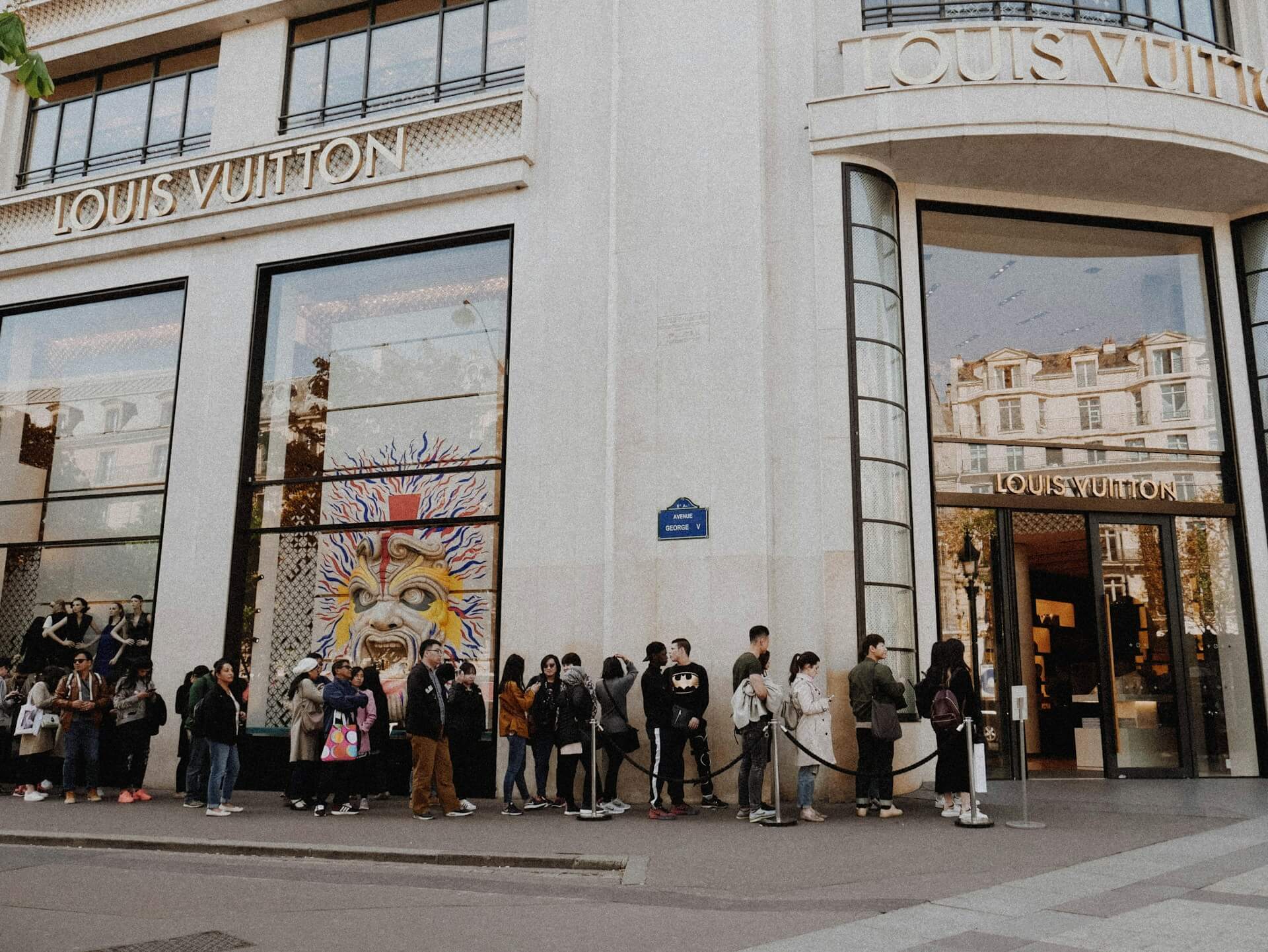Introduction
Luxury brands represent the pinnacle of quality, exclusivity, and prestige in the consumer market. They offer more than just products. they provide an experience, a status symbol, and a sense of belonging to an elite group. They do this through luxury brand marketing. Marketing in the luxury sector is extremely important because it differentiates these brands from more mainstream and affordable options. Without marketing, luxury brands could not exist.
This article explores the marketing strategies used by several big luxury brands, examining their history, the tactics they use, and how this has impacted their brand perception and sales.
I recommend reading our article on How Luxury Brands Craft Exclusivity and Desire for a better understanding when reading this article.
Table of Contents
Case Study 1: Louis Vuitton
Brand History and Heritage
Louis Vuitton was founded in 1854 by the French craftsman Louis Vuitton. Louis Vuitton started as a company specializing in luxury trunks and luggage. Over the years, it evolved into one of the most recognized luxury fashion houses in the world. The brand is commited to quality craftsmanship and innovation, which can be seen in the iconic monogram canvas and other durable products.
What Marketing Strategies Has Louis Vuitton Employed?
Use of Celebrity Endorsements
Louis Vuitton has done an excellent job at utilizing celebrity endorsements to improve its brand image. Collaborations with high-profile celebrities such as Angelina Jolie, Michelle Williams and BTS, have helped the brand reach diverse audiences while maintaining its luxurious appeal. These celebrities all have something of high value that people want and look up to.
This way you reach new audiences and create a brand image through these people. The only issue with this strategy is that if a person you collaborated with does or says something bad because this can reflect back on your brand. A good example of this is Addidas x Kanye West where they quickly cut Kanye off to retain their brand image.
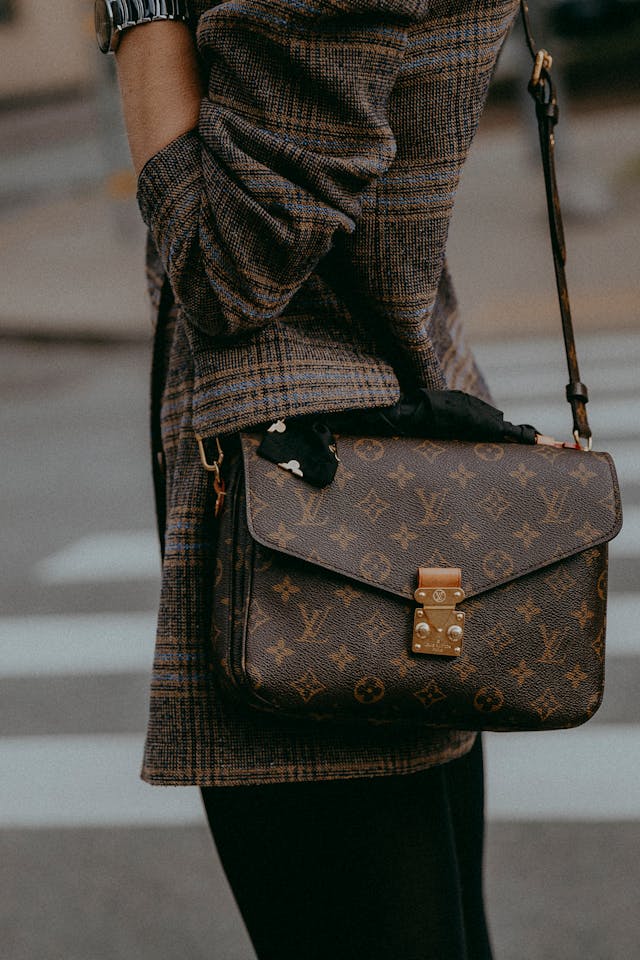
Limited Edition Collections
Limited edition collections is another key strategy. These collections often feature unique designs, special collaborations and are available only for a short period. This creates a sense of urgency and exclusivity, increasing demand and reinforcing the brand’s elite status.
A great example of from another brand is the Birkin Bag. They produce a limited amount each year, making it exclusive. This exclusivity makes the bag valuable to consumers, as most people can’t get a Birkin bag. Luxury marketing is about making your consumers feel special.
Flagship Stores and Experiential Retail
Louis Vuitton’s flagship stores are more than just stores they are also immersive experiences. Located in prime locations worldwide, these stores offer personalized services, exclusive products, and a luxurious shopping environment that enhances the overall brand experience. These stores are designed to look and feel as luxurious as possible, often placed in unique or older buildings with detailed architecture.
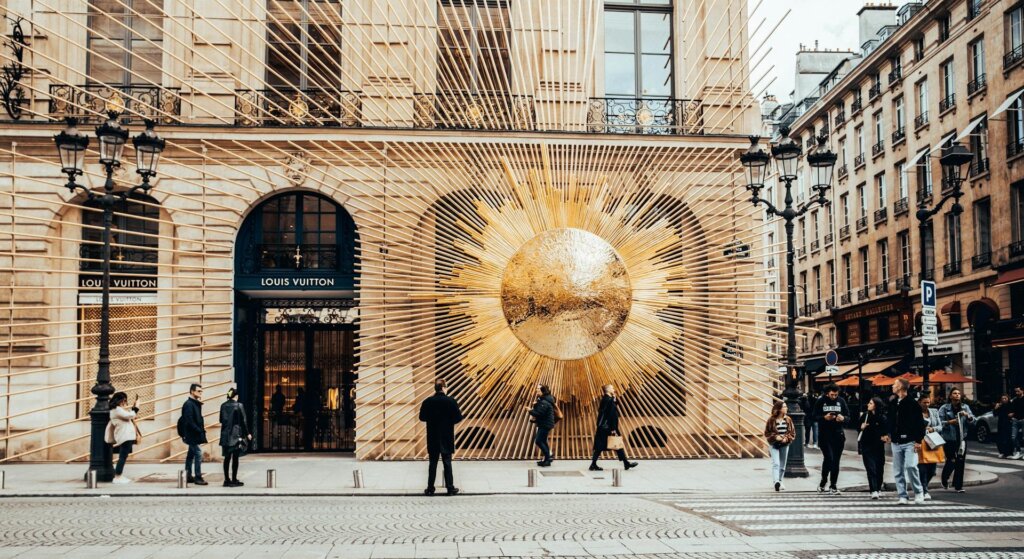
Impact on Brand Perception and Sales
The impact of these strategies on Louis Vuitton’s brand perception and sales is significant. The brand consistently ranks among the top luxury brands globally, with strong sales growth year over year. Celebrity endorsements and limited edition collections have increased interest in the brand, while flagship stores have solidified its presence in key markets. This approach has helped Louis Vuitton maintain its status as a leader in the luxury sector.
Case Study 2: Chanel
Brand History and Heritage
Chanel, was established in 1910 by Gabrielle “Coco” Chanel. Coco Chanel revolutionized women’s fashion with her modern philosophy, focusing on comfort and simplicity. The brand’s legacy includes iconic products like the Chanel No. 5 perfume, the little black dress, and the Chanel suit.
Marketing Strategies Employed
Iconic Branding and Logo
Chanel’s branding is characterized by its distinctive interlocking “CC” logo, which is instantly recognizable and synonymous with high-end fashion. This logo works effectively because of its simplicity and elegance make it easy to identify and remember. The clean, minimalist design fits Chanel’s brand philosophy of “less is more”.
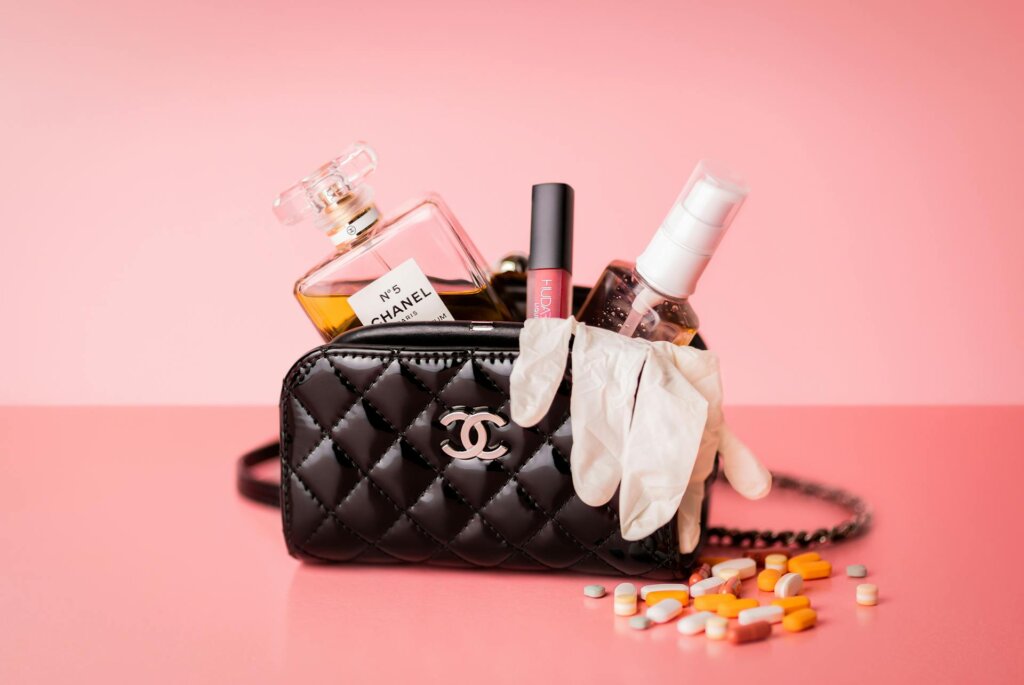
If you want to know more about Chanel’s Logo I recommend this in-depth article on Chanel’s logo: history, meaning, and Evolution by Designbro
High-Profile Fashion Shows and Events
Chanel’s fashion shows are not just showcases for new collections but also generate significant media attention. These events are known for their creative presentations. Held at prestigious locations such as the Grand Palais in Paris, Chanel’s fashion shows often feature sets and theatrical elements that make the runway into an entertaining experience.
By creating highly anticipated and visually stunning events, Chanel ensures that its fashion shows become media interests, attracting coverage from global fashion magazines, influencers, and social media platforms. This widespread media attention improves the brand’s visibility while also promoting a new collection.
Strategic Product Placement in Media
Chanel strategically places its products in high-profile films, television shows, and other media to maintain its visibility and desirability. This placement not only reaches a broad audience but also associates the brand with luxury and high society, further enhancing its allure.
For example, Chanel No. 5 perfume has appeared in movies such as The Fifth Element and in alot more movies and shows.
You can explore how many instances of Chanel product placements there have been in movies or shows on the ProductPlacementBlog.
Additionally, celebrities often wear Chanel at red-carpet events and in high-profile photo shoots. This consistent visibility in in movies or among celebrities strengthens Chanel’s image as a luxury brand as movies usually depict something people want and alot of people want to be a celebrity.
Impact on Brand Perception and Sales
Chanel’s marketing strategies have created strong brand loyalty and a solid market position. By focusing on iconic imagery and strategic media placement, Chanel stays in the minds of luxury consumers. The brand continues to see strong sales, especially in its fragrance and beauty lines, thanks to its consistent and effective marketing efforts.
Case Study 3: Celine A Quiet Luxury Brand
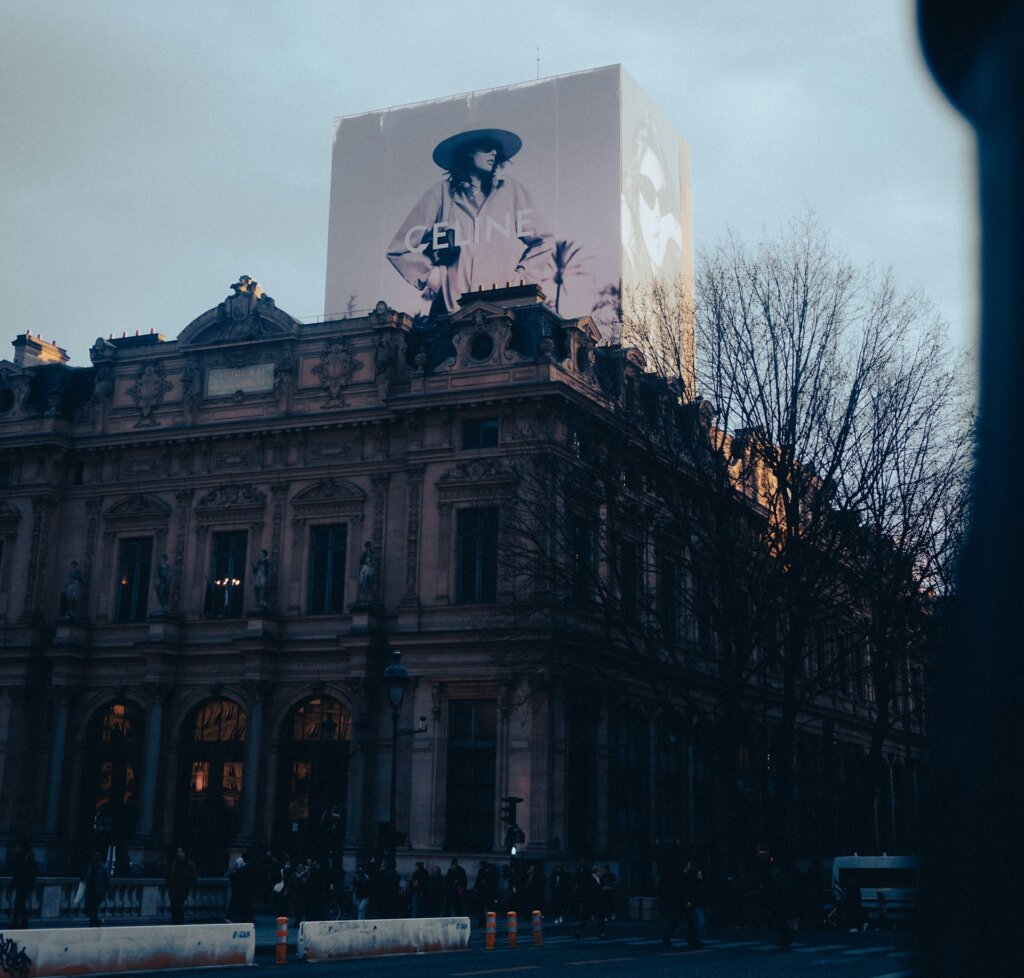
Brand History and Heritage
Celine was established in 1945 by Céline Vipiana. It started as a made-to-measure children’s shoe business and has evolved into a famous luxury fashion brand. Under the creative direction of Hedi Slimane, Celine has embraced a minimalistic aesthetic that appeals to those who appreciate understated elegance and high-quality clothing.
Marketing Strategies Employed
Emphasis on Quiet Luxury
Celine is a good example of the concept of quiet luxury, focusing on understated elegance rather than flashy branding. The brand’s simple designs and subtle logos attract buyers who prefer sophistication and elegance over flashiness. This approach appeals to a demographic that seeks luxury in the quality of the products rather than showing of their wealth.
Celine promotes this through clean, simple imagery in their advertising campaigns on their Instagram and YouTube, and in high-end fashion magazines like Vogue, Harper’s Bazaar, and Elle.
Strategic Store Design
Celine’s flagship stores are designed to reflect the brand’s minimalist and luxurious designs. These retail spaces offer a peaceful and beautiful shopping environment that feels really luxurious. This improves the overall customer experience.
The store designs often have bright colors and high-quality materials. All this gives a really professional feeling and experience when shopping in their stores.
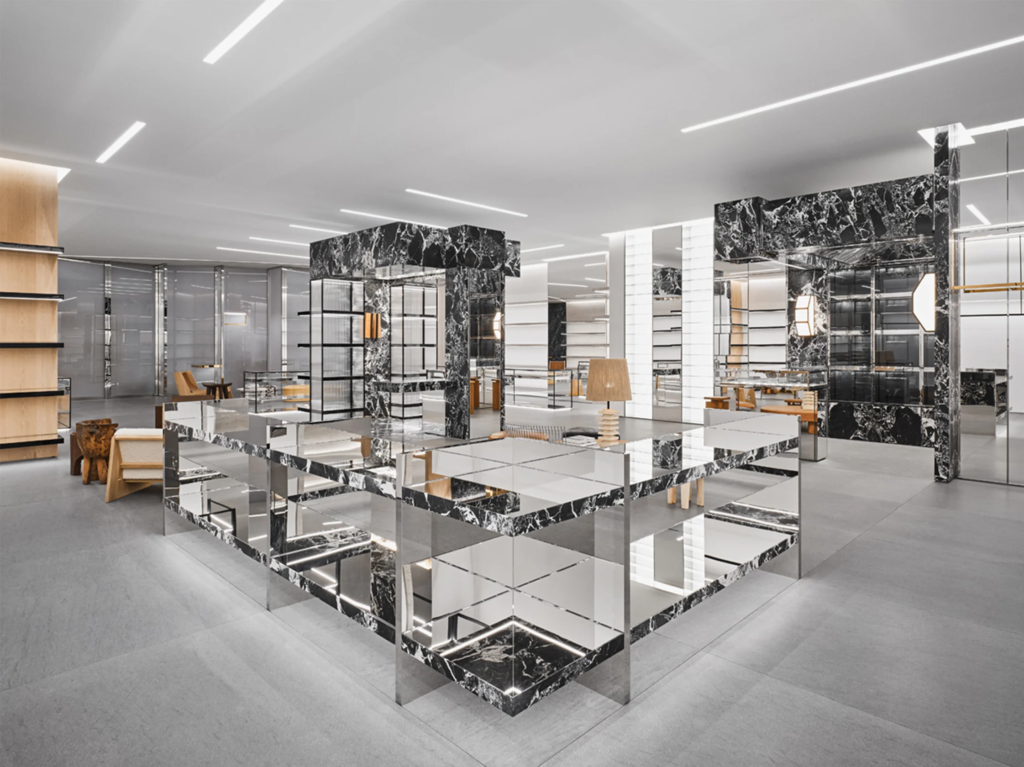
Selective Celebrity Endorsements
While Celine does not heavily rely on celebrity endorsements, the brand strategically collaborates with individuals who fit its perception of elegance. These partnerships are carefully picked to match Celine’s image, making sure that the brand maintains its allure and exclusivity.
Impact on Brand Perception and Sales
Celine’s focus on quiet luxury and high-quality craftsmanship has significantly enhanced its brand perception. The brand is seen as a symbol of quality and elegance, being interesting to consumers who appreciate subtlety and elegance. This strategic positioning has resulted in strong sales growth, with Celine attracting a loyal customer base that values the brand’s commitment to quality and understated luxury/quiet luxury.
Common Themes in Luxury Brand Marketing
Several common themes emerge from the case studies of these luxury brands:
- Emphasis on Heritage and Exclusivity: Luxury brands consistently highlight their rich heritage and exclusive nature to differentiate themselves from mainstream brands. This creates a sense of tradition and prestige that appeals to luxury consumers. If you plan on starting your own luxury brand and want to establish a rich heritage, you can buy an already existing old brand and transform it into a luxury brand.
- Use of High-Profile Endorsements and Collaborations: Celebrity endorsements and collaborations with famous artists or other brands increase visibility and desirability. These partnerships create aspirational value and attract a broad audience.
- Focus on Experience and Personalized Retail Experiences: Luxury brands invest in creating unique and immersive retail environments that offer personalized services and exclusive products. This improves the overall brand experience and makes people want to come back as they experience a unique and high-quality shopping experience.
- Adaptation to Digital Marketing Trends: While maintaining their prestigious image, luxury brands have adapted to digital marketing trends, using social media, influencer marketing, and interactive campaigns to engage with modern consumers.
Challenges in Luxury Brand Marketing
Despite their success, luxury brands have a couple of challenges in their marketing efforts:
- Balancing Exclusivity with Broader Market Reach: Luxury brands have to balance between maintaining exclusivity and expanding their market reach. Overextending can dilute the brand’s interest while being too exclusive can limit growth opportunities. If too many people can get it, no one wants it, and if barely anyone can it there isn’t much money to be made.
- Addressing Sustainability and Ethical Concerns: Consumers demand ethical and sustainable practices from luxury brands. Addressing these concerns while maintaining high standards of quality and exclusivity presents a significant challenge.
Conclusion
Luxury brands symbolize quality, exclusivity, and prestige, offering not just products but an amazing and unique experience but also status. This article explored the marketing strategies of 3 major luxury brands and how these have influenced their brand perception and sales.
Louis Vuitton’s use of celebrity endorsements and limited editions, Chanel’s iconic branding and high-profile fashion shows, and Celine’s focus on quiet luxury and strategic store design show diverse approaches to luxury marketing and there are alot more.
In summary, luxury brand marketing is vital for differentiating these brands from mainstream options, making sure they remain symbols of prestige and quality.

